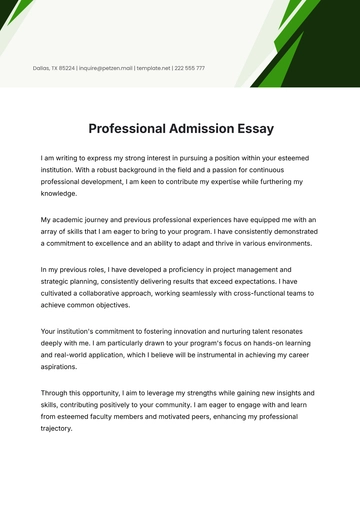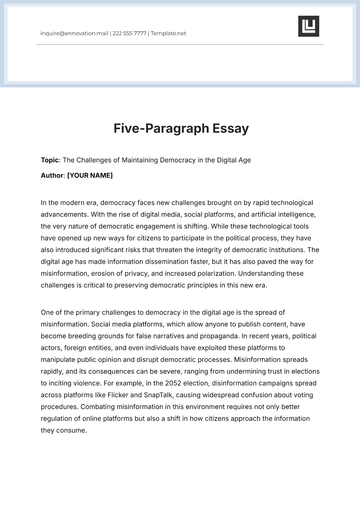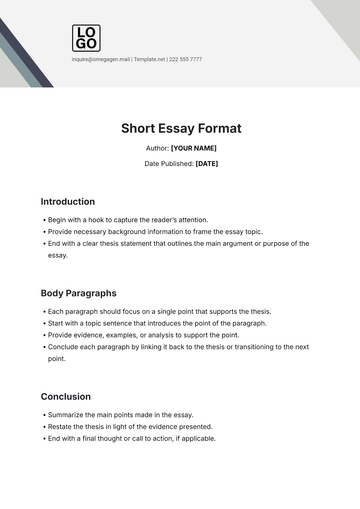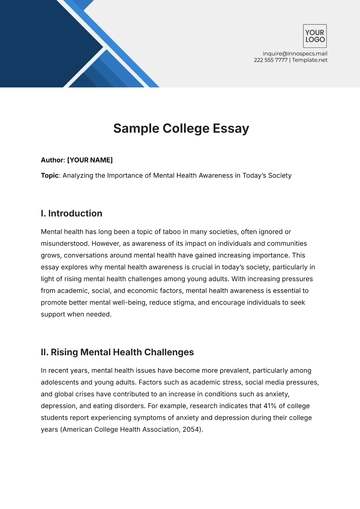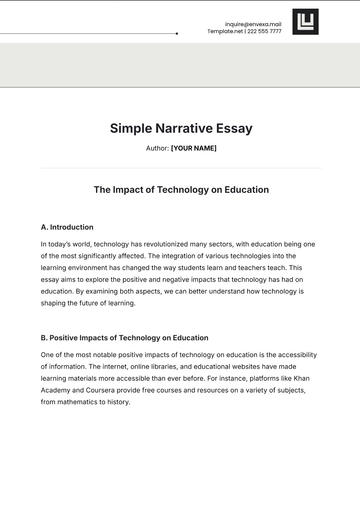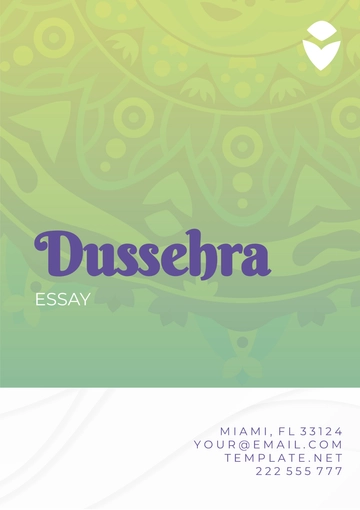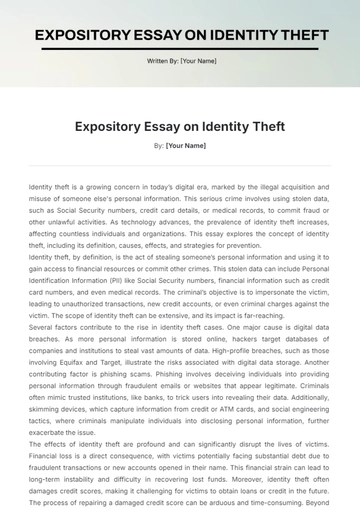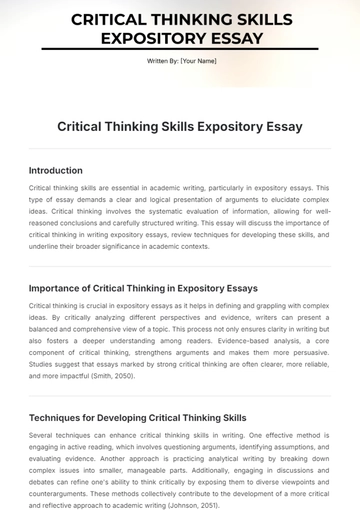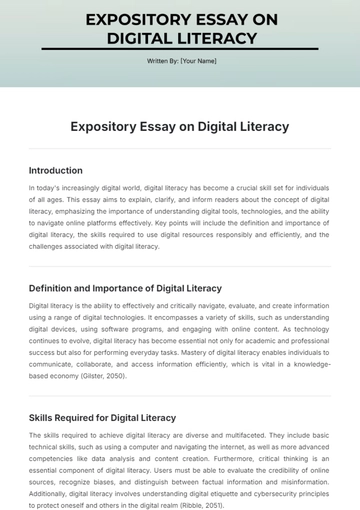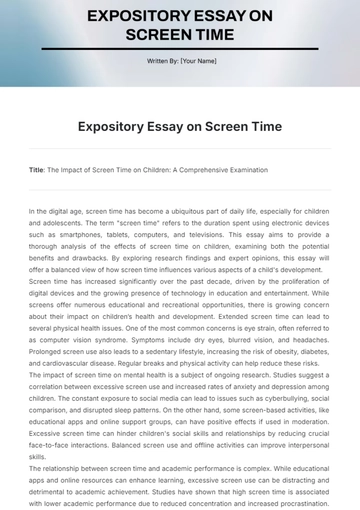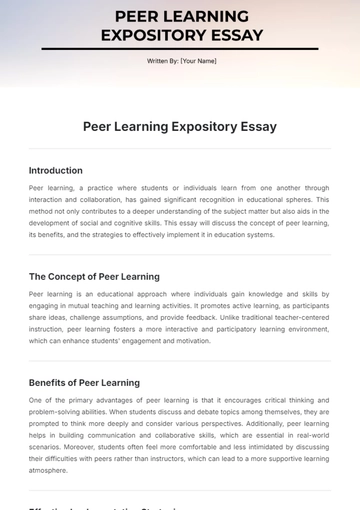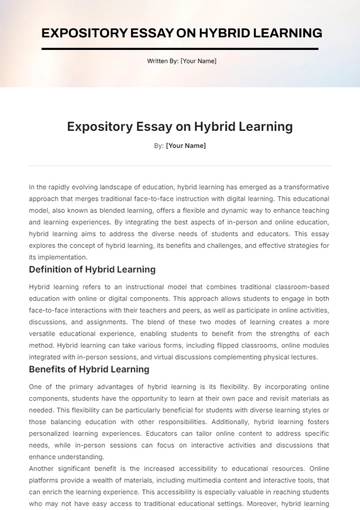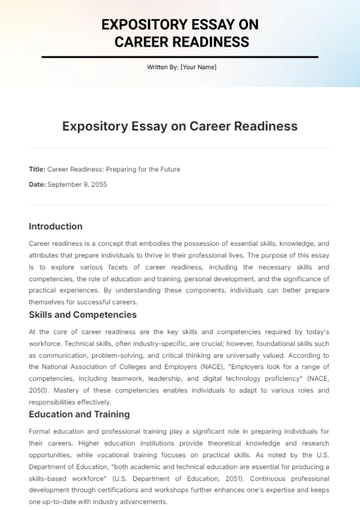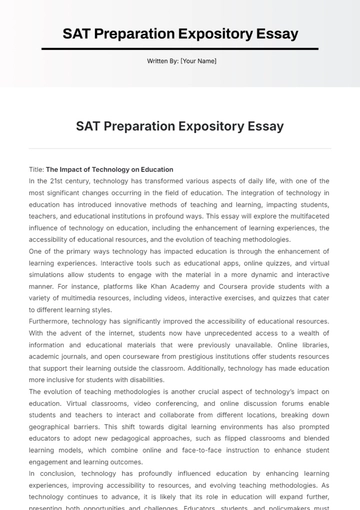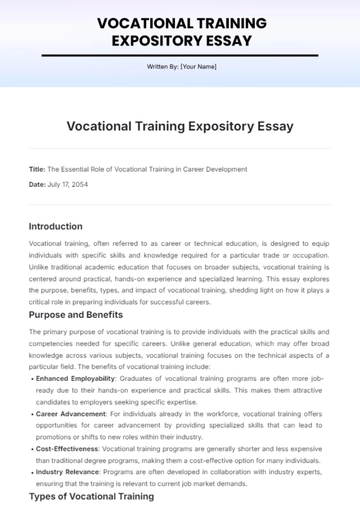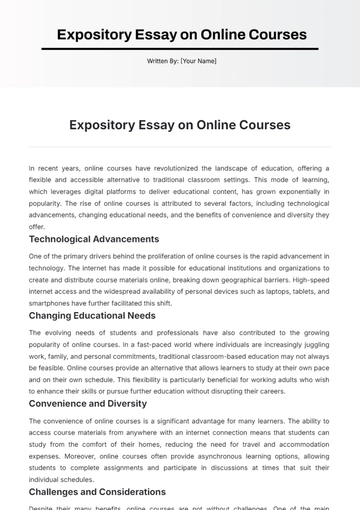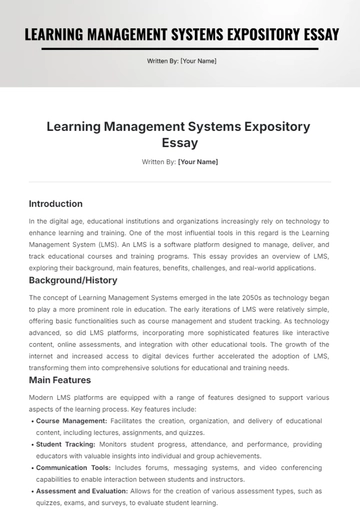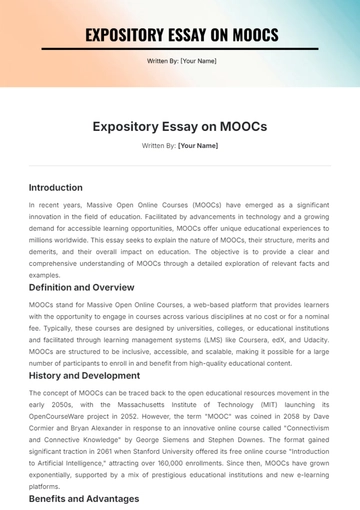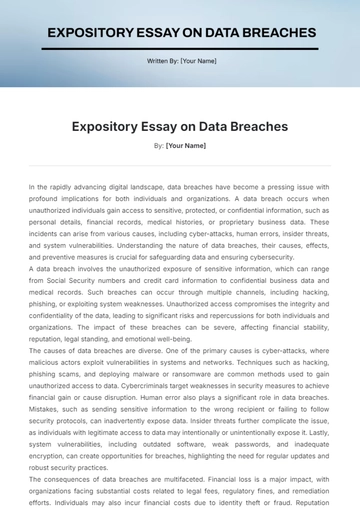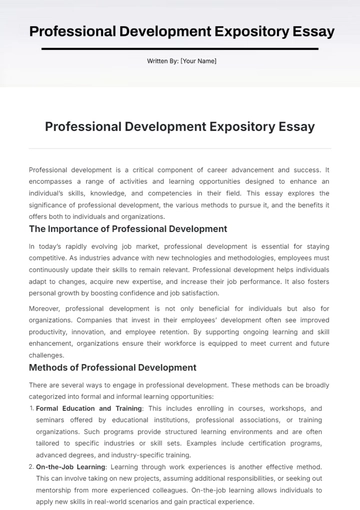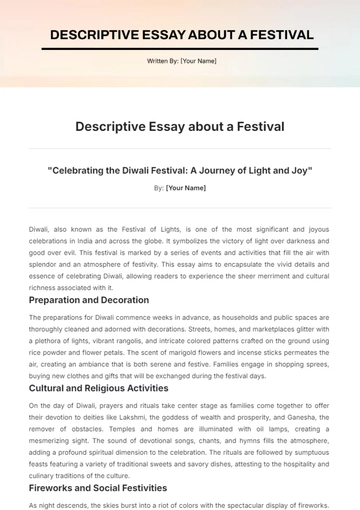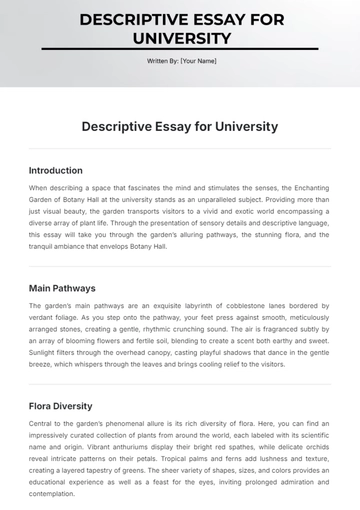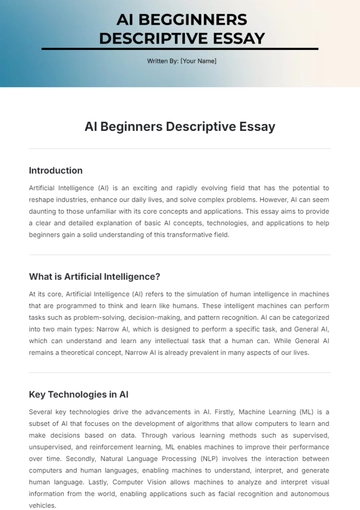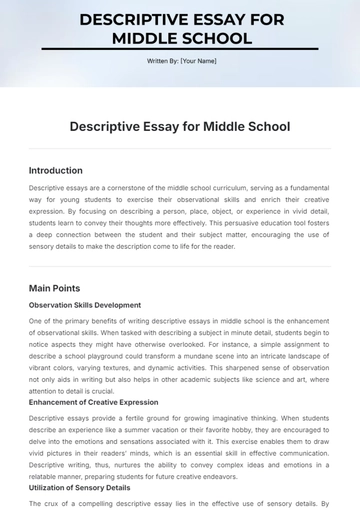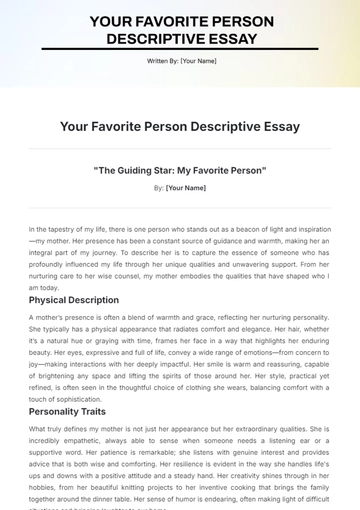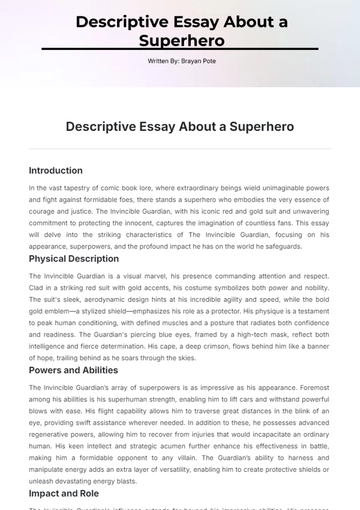Free Descriptive Essay on the Five Senses
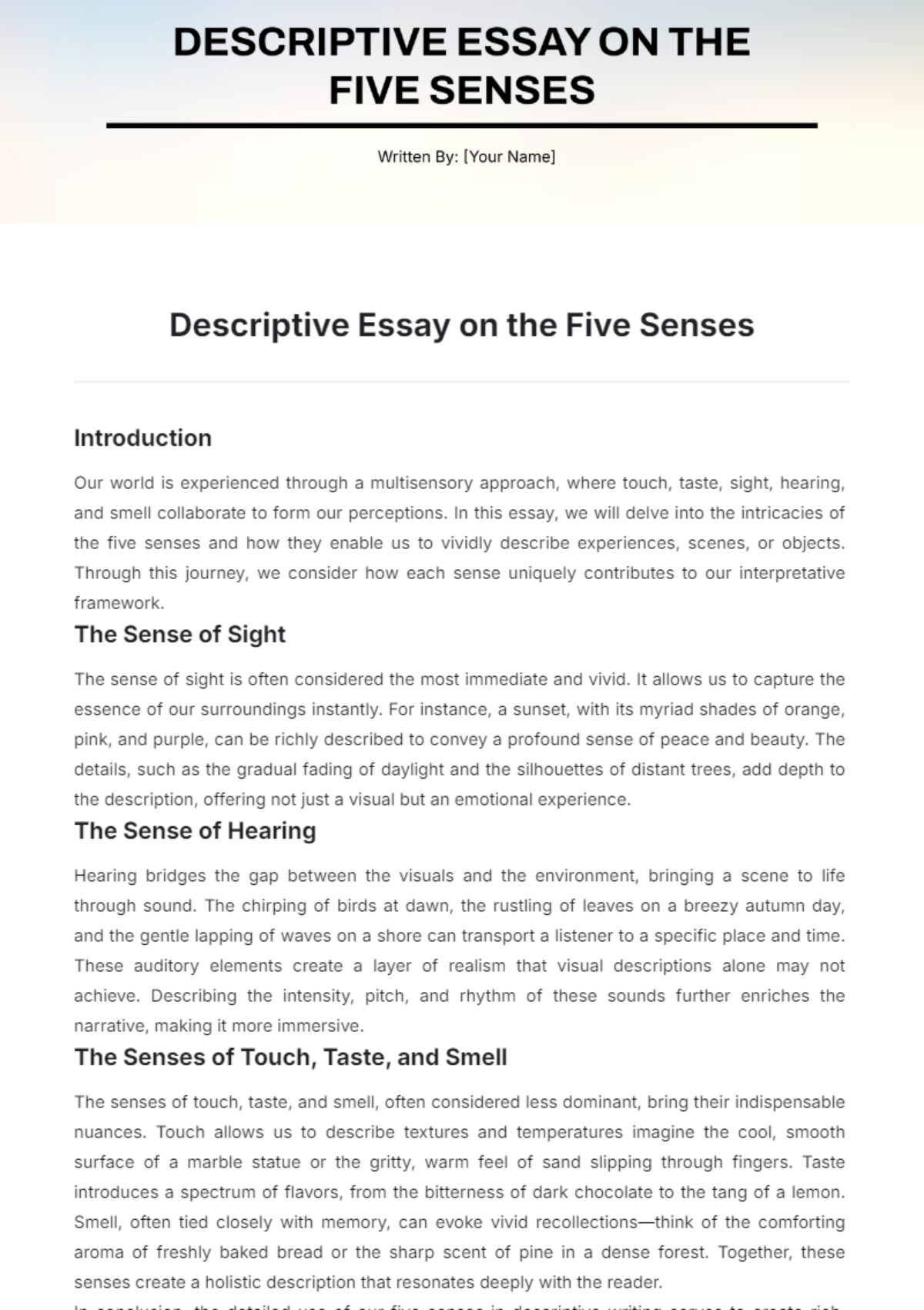
Introduction
Our world is experienced through a multisensory approach, where touch, taste, sight, hearing, and smell collaborate to form our perceptions. In this essay, we will delve into the intricacies of the five senses and how they enable us to vividly describe experiences, scenes, or objects. Through this journey, we consider how each sense uniquely contributes to our interpretative framework.
The Sense of Sight
The sense of sight is often considered the most immediate and vivid. It allows us to capture the essence of our surroundings instantly. For instance, a sunset, with its myriad shades of orange, pink, and purple, can be richly described to convey a profound sense of peace and beauty. The details, such as the gradual fading of daylight and the silhouettes of distant trees, add depth to the description, offering not just a visual but an emotional experience.
The Sense of Hearing
Hearing bridges the gap between the visuals and the environment, bringing a scene to life through sound. The chirping of birds at dawn, the rustling of leaves on a breezy autumn day, and the gentle lapping of waves on a shore can transport a listener to a specific place and time. These auditory elements create a layer of realism that visual descriptions alone may not achieve. Describing the intensity, pitch, and rhythm of these sounds further enriches the narrative, making it more immersive.
The Senses of Touch, Taste, and Smell
The senses of touch, taste, and smell, often considered less dominant, bring their indispensable nuances. Touch allows us to describe textures and temperatures imagine the cool, smooth surface of a marble statue or the gritty, warm feel of sand slipping through fingers. Taste introduces a spectrum of flavors, from the bitterness of dark chocolate to the tang of a lemon. Smell, often tied closely with memory, can evoke vivid recollections—think of the comforting aroma of freshly baked bread or the sharp scent of pine in a dense forest. Together, these senses create a holistic description that resonates deeply with the reader.
In conclusion, the detailed use of our five senses in descriptive writing serves to create rich, engaging, and multi-dimensional experiences for readers. Through sight, we capture and convey vivid imagery. Hearing adds an auditory richness that brings scenes to life, while touch, taste, and smell add nuanced layers of detail. An effective descriptive essay harnesses these senses to paint a complete and compelling picture, offering readers not just a look at an experience or object, but a feeling of being fully present within the narrative.
- 100% Customizable, free editor
- Access 1 Million+ Templates, photo’s & graphics
- Download or share as a template
- Click and replace photos, graphics, text, backgrounds
- Resize, crop, AI write & more
- Access advanced editor
Create essays that engage all the senses with the Descriptive Essay on the Five Senses Template on Template.net. This editable and customizable tool helps evoke vivid sensory imagery, and it's easily editable in our Ai Editor Tool for a unique writing experience.
